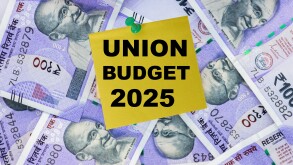The decision of the Karnataka High Court outlines the principles for computing relief under section 10A of the Income Tax Act, 1961.
Section 10A provides for a five-year total tax holiday to industrial undertakings which manufacture or produce any article and are set up in notified free trade zones.
In a batch of appeals filed by the tax department against Yokogawa India Limited and other related cases, the court ruled that although section 10A has been amended to indicate the tax holiday to be a deduction from the total income as against the exemption, it would need to be read as being a deduction in the computation of total income.
Consequently, it continues to retain the character of an exemption. The profits eligible for relief under section 10A are to be computed, before giving effect to the carry forward and set off provisions under section 72 of the Act.
“The judgment will settle a protracted litigation on the manner of computation of the tax holiday when there are other business losses,” said Gokul Chaudhri of BMR Advisors – Taxand.
Facts
Yokogawa had two separate business divisions, one of which was a unit registered under the Software Technology Park of India scheme. The company had claimed a relief under section 10A of the Act before setting off brought forward losses and depreciation.
However, during the course of the assessment proceedings the assessing officer (AO) held that relief under section 10A is to be provided after setting off all brought forward. Accordingly, the relief under section 10A was recomputed at nil, after setting off the losses under section 72.
On appeal, the Commissioner of Income Tax (Appeals) [CIT (A)] ruled in favour of the company by holding that total income used in the provisions of section 10A refers to the global income of the company and the income eligible for exemption has to be excluded at source even before arriving at the gross total income. Consequently, losses of a non 10A unit cannot be set off against the income of the 10A unit.
Ruling
The court observed: The scheme of the Act provides for deduction in computing total income, but the Act does not contain any mechanism for any deduction from the total income already computed as provided under the Act.
It was also held that section 10A provides for carry forward of depreciation and business losses relating to any year of the tax holiday period to be set off against income of any year, post the tax holiday period. Thus, the legislative intent was to compute the amount of unabsorbed business loss and depreciation at the end of the tax holiday period separately, to enable its set off after tax holiday period. Reliance was placed on the Bombay High Court decision in Hindustan Unilever Ltd (325 ITR 102).
This ruling was pronounced by a division bench of Justice N Kumar and Justice Ravi Malimath.
Additional reporting from www.taxsutra.com.










